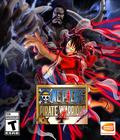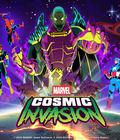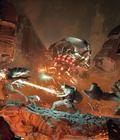The postapocalypse has been used as a backdrop for games and other media often enough that the prospect of society living on after a large catastrophic event no longer carries much fear or fascination. You already know that today's annoyances become more serious threats later, everything gets repurposed into a completely different use, and people continue to persevere amidst the chaos. This is why the likes of Biomutant and Mutant Year Zero were more fascinating because it took those traits but changed the cast to non-humans, giving the whole thing a fresh feel while still providing players with solid gameplay. Initially, Clid the Snail looks to accomplish the same thing, and while the setting is intriguing, the gameplay doesn't live up to it.
Far in the future, humanity has perished, and smaller animals have taken over the earth, evolving to become bipedal and use technology. You play the role of Clid, a snail who loves drinking as much as he loves fighting. After traveling outside of his citadel to hunt down some slugs, he is banished by his fellow slugs for constantly disobeying orders and destroying the defenses that the citadel had put in place against a slug attack. As Clid wanders the wasteland, he runs into a flamethrower-toting rat that completely decimated a grasshopper village. That battle eventually leads Clid to a ragtag bunch of outcast creatures that send him on assignments to help other villages while also trying to discover why the slugs have gone mad.
The story can't be called amazing, as there hardly any big moments or twists that catch you by surprise, but you might not care too much since the other elements carry things well. The characters are quirky enough, the leader keeps things simple but seems to be hiding something, the blacksmith hates your guts, your optimistic companion is loyal, etc. You know what they'll say and how they'll act, but you don't want to brush them aside. Similarly, the world and its history are both charming and dark. The use of CDs as tables and forks as decorations is cool to see, but it's creepy to traverse an area with human bones and skeletons. Likewise, there's enough history to keep you wanting to complete the adventure.
The game mechanics are that of a twin-stick shooter, but you manually need to pull the trigger as opposed to automatically shooting when you tilt the right thumbstick in a direction. Throughout your journey, you'll acquire more weapons, such as a flamethrower and a shotgun — all of which have limited ammo — but you'll likely stick with your default blaster with unlimited ammo and a charge shot that can take care of most foes (except for bosses, naturally). The other guns are relegated to puzzle solving. Aside from shooting, you have grenades, mines, and various shells that can unleash different powers, provided you charge them up via killing enemies. You can't jump, but you can perform a dodge roll to get through small gaps.
If you were expecting a fast-paced shooter because of the twin-stick controls, you'll be surprised to know that's not the case. There are still enemies, but you aren't fighting off a multitude of them all the time. The more measured approach to combat means that the game provides a few quiet moments for exploration, which usually leads to areas with coins and ammo. Clid the Snail also fills in time between combat to engage in some very light platforming and puzzles. The latter is focused on laser manipulation and puzzles, and a few others involve blocked pathways that require you to experiment with weapons to discover which one is required to progress. It can be tedious to see the same elevator and laser types blocking progression throughout the game, but they don't drag down the experience.
That slower pace, along with the split focus on puzzles and shooting, would be welcome if it weren't for a few issues. There may be a variety of enemy types, but they all practically behave the same way. Except for the bosses and a few of the larger enemies, just about every foe defaults to blindly rushing at you. The boss fights are fun, but the game relies heavily on mass enemy rushes, which make sense in the world but feel like padding. Clid's slow movement means that when compared to other shooters, it feels like it takes a while to cover substantial ground. It doesn't help that your faster means of movement, the dodge roll, is limited via a stamina bar. That slow movement is also amplified when Clid throws a grenade; there's a very noticeable delay between the button press and actual pitch of the grenade. Overall, the combat feels unresponsive and lethargic after a little while.
There are other, smaller issues that don't lend themselves to a good experience. The button prompts for speaking to characters or hitting switches is always displayed in the bottom left corner of the screen. It makes for a cleaner-looking screen because it blends in with the other HUD elements, but it also means that you can miss it if your focus is on the middle of the screen. The same applies to the lack of navigation aids, whether it's an arrow that appears after some time or a minimap. The environments seem intuitive enough, but don't be surprised if you come back to the game after stepping away for a while and get lost in terms of what to do or where to go. The game presents enough of a challenge that dying is expected, but the sparse checkpoints mean having to replay areas often if you run into a tough fight, further amplifying the navigation issues. These minor things might not seem like much, but they become more noticeable when paired with the game's other bigger issues.
The quality of the presentation is all over the place. From the audio side, the music is fine, but it often doesn't fit in with the situation. Get into a scenario where you need to single-handedly fend off a slug rush, and you'll be accompanied by a thoughtful, slow-paced track. Some of the calmer scenarios have music that makes you want to shoot instead. The effects are fine, and the vocal gibberish fits well because it sounds like something from the Baltic regions. One gripe is that the overall sound volume is way too loud, so you'll need to drop normal volume levels halfway down to not blow out your eardrums or speakers.
Graphically, the game takes us down the usual rocky landscapes and snowy fields with the expected debris from the old world strewn around and some simple wooden machinery in random spots. It looks fine, but it would look more appealing if the game didn't limit the color palette to drab colors. That would make sense for the setting, but it gets used for just about everything, creating cases where enemies and objects blend in too well with the environment. The same goes for some of the environmental objects that get in front of the camera. The game knows to provide an outline when you go behind these objects, but it doesn't do the same to enemies, so they have an unfair advantage that becomes frustrating when it happens far too often.
There's potential in Clid the Snail. The postapocalyptic setting feels fresher thanks to the new perspective, and the characters are charming, even if they fit expected tropes from stories about a ragtag bunch being forced to come together. A fascinating setting cannot overcome gameplay that feels repetitive due to unexciting shooting mechanics and enemies that fail to become intelligent until you reach a boss fight. It can be fun if you temper your expectations significantly, but for most people, Clid the Snail won't do it for them.
Score: 6.0/10
More articles about Clid The Snail










 Clid the Snail is a dark fable about the feeling of not fitting in, of being an outcast.
Clid the Snail is a dark fable about the feeling of not fitting in, of being an outcast.






















